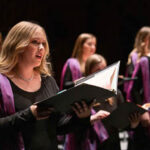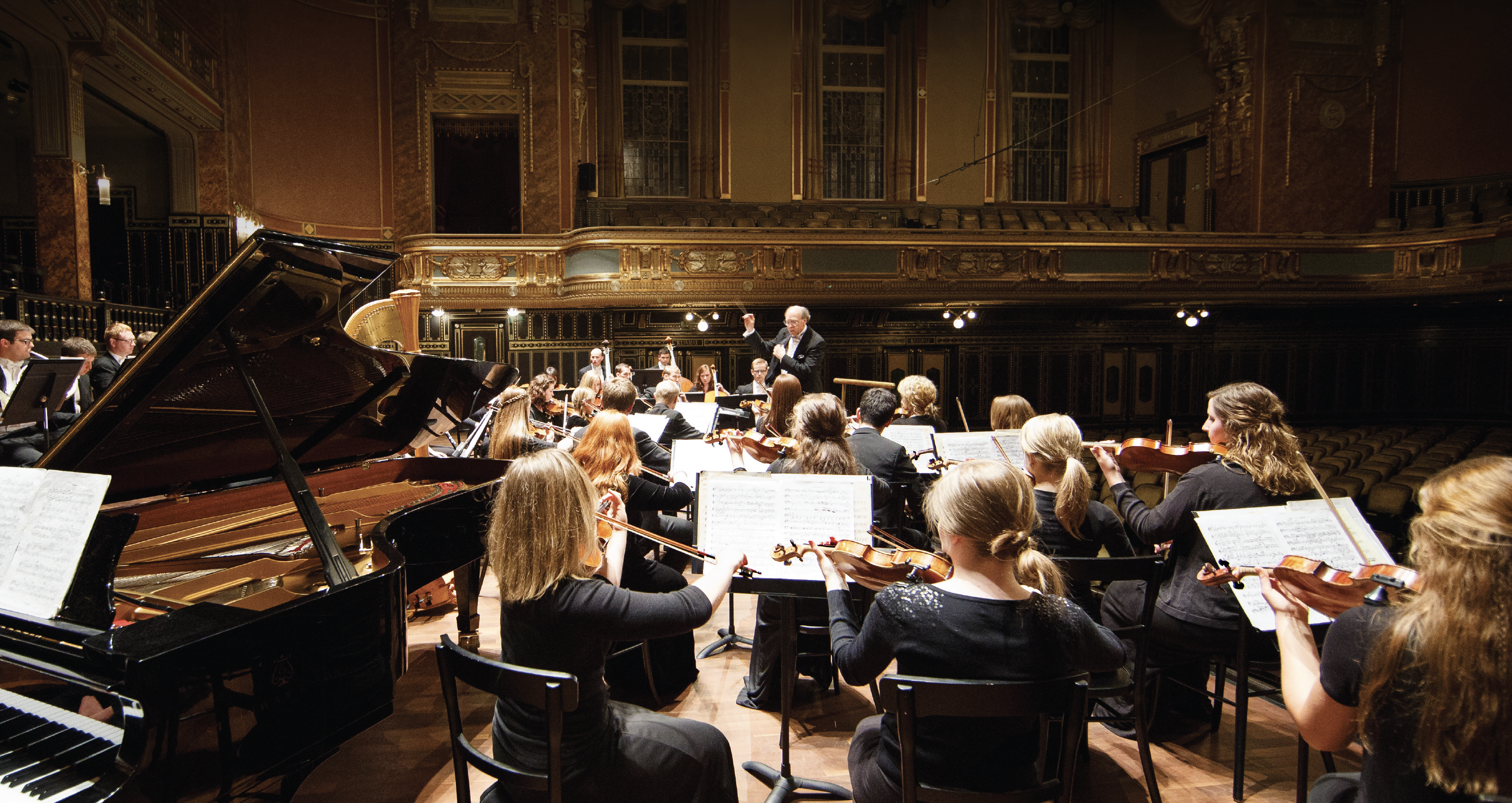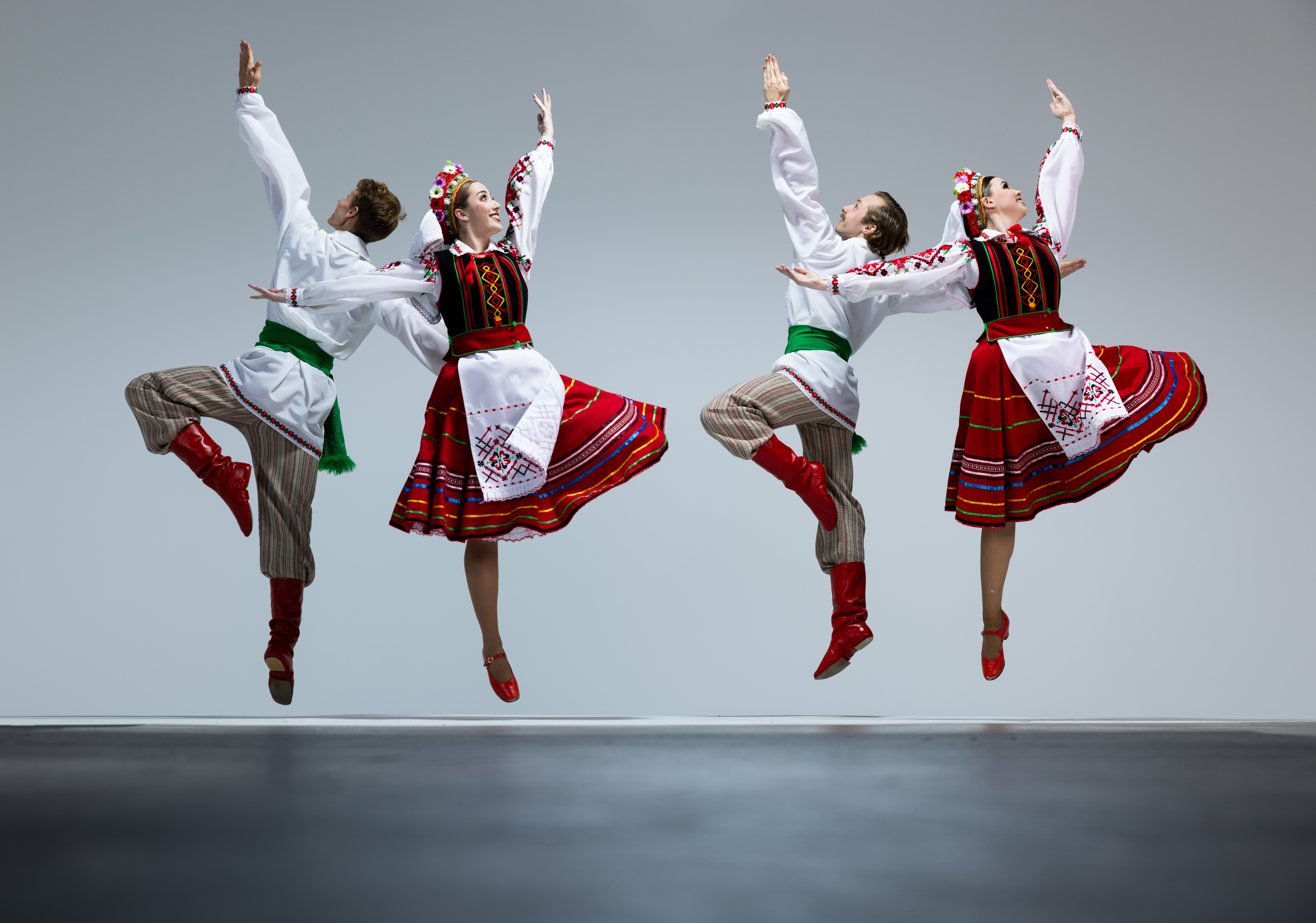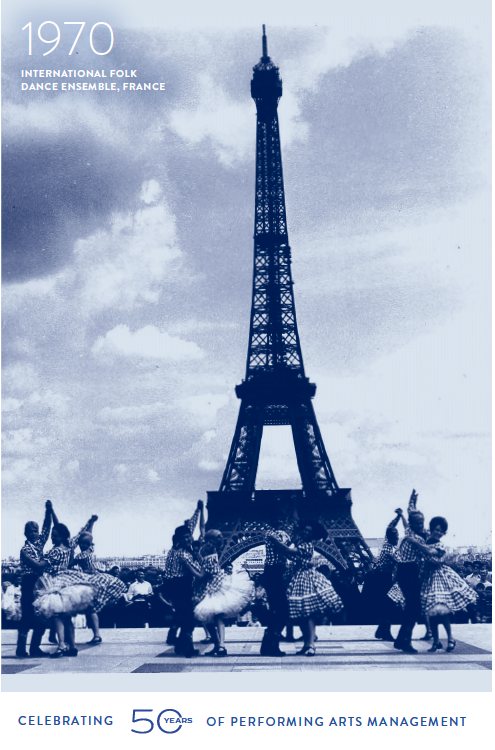
BYU Performing Arts Management has a rich history of sending performing groups all over the world. Stemming from the Program Bureau in 1971 and originally called the Office of Performance Scheduling, Performing Arts Management was created to facilitate the coordination of booking, travel, supervision, and promotion of all official BYU groups that perform globally. The office was initially directed by Bruce Olsen and soon after by Edward Blaser, who oversaw the program’s title change to Performing Arts Management in 1994. After nearly 40 years, Blaser passed the torch in 2015 to longtime assistant director Rex Barrington, who served until his retirement at the end of 2020. Barrington was succeeded by assistant director Shane Wright in 2021.
Performing Arts Management represents the Ballroom Dance Company, the BYU Singers, the Chamber Orchestra, Contemporary Dance Theatre, International Folk Dance Ensemble, Jazz Legacy, Living Legends, Men’s Chorus, Mountain Strings, Noteworthy, the Philharmonic Orchestra, Synthesis, Theatre Ballet, Vocal Point, the Wind Symphony, and the Young Ambassadors.
These ensembles represent Brigham Young University’s finest in the performing arts. In addition to presenting concerts worldwide, group members also participate in international festivals, competitions, conferences, conventions, and other community outreach events. Presenters from all over the world reach out to Performing Arts Management to have BYU groups perform in their area. These presenters include arts councils, civic clubs, schools, charities, and other private groups. Performing Arts Management typically organizes more than 400 performances annually in 140 cities and 20 countries. Over the past 50 years, these talented artists have entertained and uplifted more than 15 million people in 101 countries.
Through the efforts of Performing Arts Management, BYU has helped foster important international relationships for the university. For example, in 1979, BYU performing arts groups were invited for the first time to tour China, a country just opening to the world. With the support of the Chinese government, the tour’s concerts burst with audience members trying to get a look at one of the first Western performing groups to enter China.
Under the guidance of Wright, Performing Arts Management has a vision to build on the success of their predecessors by creating and maintaining relationships with members of the international community. Performing Arts Management looks forward to the next 50 years of sending groups to perform, learn, and serve all over the world.





















